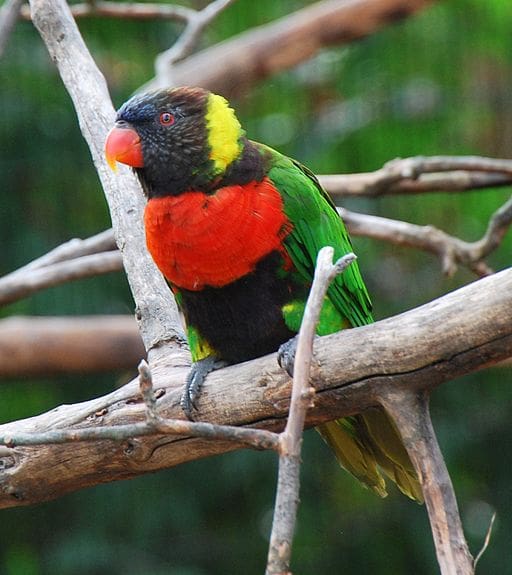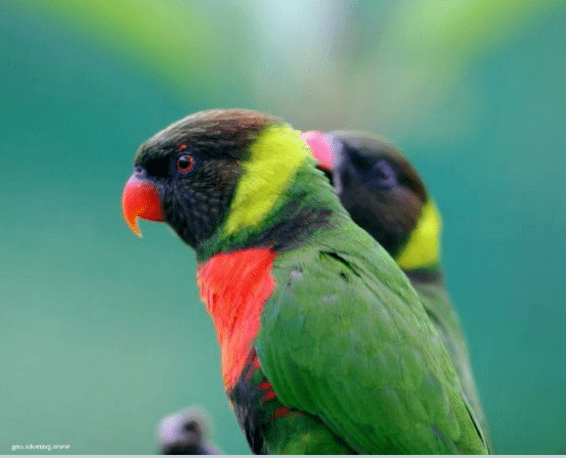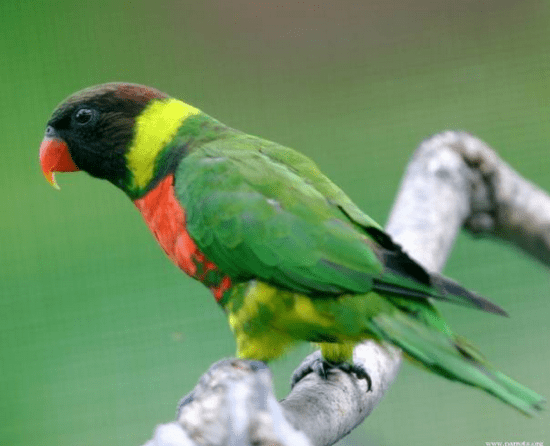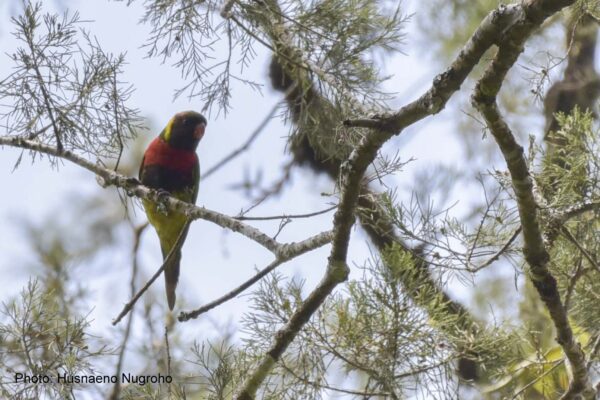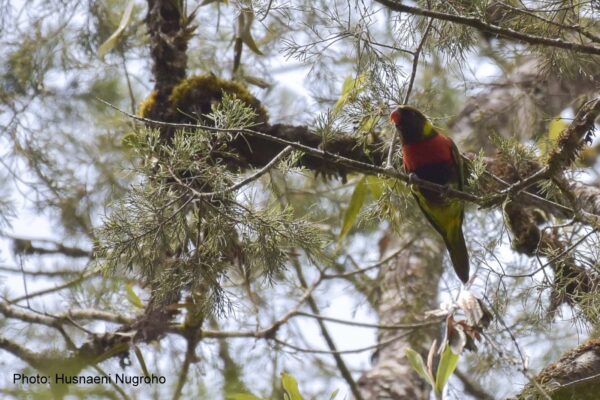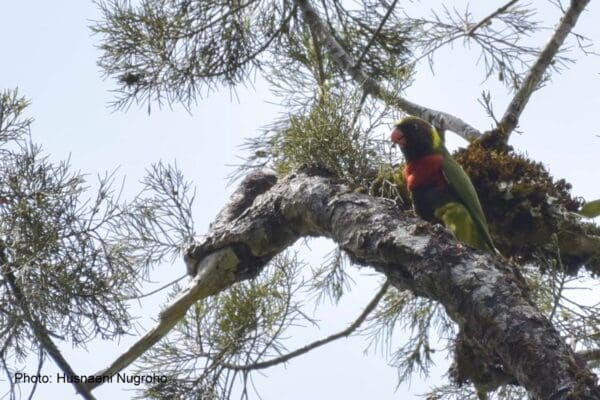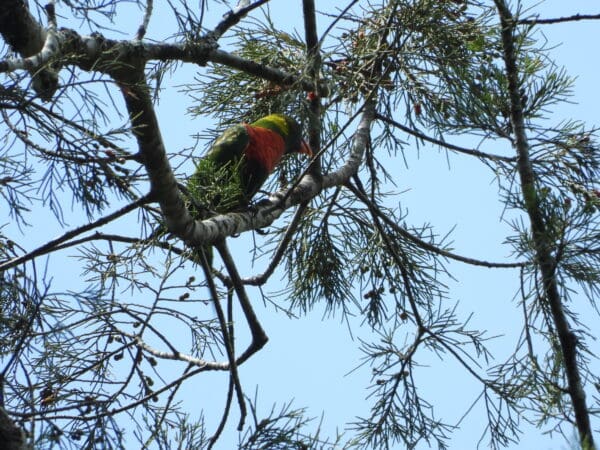Scarlet-breasted Lorikeet
Also known as:
Sunset Lorikeet, Forsten's Lorikeet, Mitchell's Lorikeet (T.f. mitchellii)
Also known as:
Sunset Lorikeet, Forsten's Lorikeet, Mitchell's Lorikeet (T.f. mitchellii)
![© Ted (originally posted to Flickr as DSC_0025) [CC BY-SA 2.0] via Wikimedia Commons A Scarlet-breasted Lorikeet perches on a limb](https://gt2024.parrots.org/wp-content/uploads/2023/01/wpt_Scarlet-breasted-Lorikeet_2007-100x100.jpg)
![© Jeff Kubina deriv. work: Snowmanradio [CC BY-SA 2.0] via Wikimedia Commons A Scarlet-breasted Lorikeet perches on a branch](https://gt2024.parrots.org/wp-content/uploads/2023/01/wpt_Scarlet-breasted-Lorikeet_2007-13-100x100.jpg)
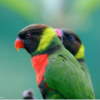
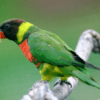
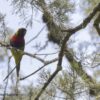
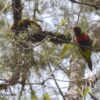
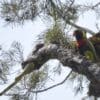
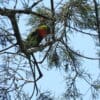
DID YOU KNOW?
Scarlet-breasted Lorikeets can be found in large mixed flocks of parrots.

Trichoglossus

forsteni
Size:
26 cm (10 in)
Weight:
100-157 g (3.5-5.5 oz)
Subspecies including nominate:
four: T.f. forsteni, T. f. djampeanus, T. f. mitchellii, T. f. stresemanni
Colour Adult:
T.f. forsteni: Both adults as in mitchelli but with darker red breast; purple/blue streaking on forehead and cheeks; more yellow collar bordered on hindneck by purple/blue; purple abdomen; green barring on thighs and flanks minimal; larger in size.
T.f. mitchellii: Both adults black/brown head with grey/green streaks on crown to cheeks; red/brown wash on occiput; red breast with minimal or no barring; yellow/green collar; purple/black abdomen; smaller in size.
T.f. djampeanus: Both adults differ from forsteni by head being darker and more evidently streaked brighter purple/blue.
T.f. stresemanni: Both adults as in forsteni but with paler orange/red breast; green wash on occiput; feathers of mantle having yellow/orange bases.
Colour Juvenile:
As in adults.
Call:
Repeated notes, sharp, rolling while in flight. Shrill chattering while feeding. Soft notes at rest.
More Information:
Content Sources:
Wikipedia
BirdLife International
Cornell Lab of Ornithology/Birds of the World
Captive Status:
Uncommon
Longevity:
20 yrs in the wild, 15-25 yrs in captivity.
Housing:
Enclosure with drain in floor, or suspended cage over tiled or concrete floor.
Diet:
Nectar – a commercial type specially formulated for small species or a mix of baby cereal (lactose-free) and honey, malt extract or molasses, mixed with filtered water, made fresh once or twice daily, making up at least 40 percent of the diet; vegetables and fruit especially apple, pear, orange, cactus fruits and bananas, and one or more daily of: carrot, fresh corn, green leaves; plus dried figs soaked in water for a few hours, spray millet and a small amount of soaked or sprouted sunflower seed and small amount of canary seed.
Enrichment:
Loves bathing, hanging toys, puzzle/foraging toys, foot toys, ladders, swings, socializing; noisy toys (bells, squeakers), bird safe chewables (vegetable tanned leather, safe woods).
Nest Box Size:
L-shaped box, 51 cm x 36 cm (20 x 14 in).
Clutch Size:
2-3
Fledging Age:
8-9 weeks
Hatch Weight:
—
Peak Weight:
—
Weaning Weight:
—
World Population:
Fewer than 1500 mature individuals.
IUCN Red List Status:
Endangered
CITES Listing:
Appendix II
As conspecific with Trichoglossus haematodus.
Threat Summary:
Restricted-range species: is found in Java and Bali Forests and Northern Nusa Tenggara Endemic Bird Areas. The population is suspected to be undergoing a rapid decline of 50-79% over three generations. Subspecies mitchelli rare on Bali, and djampeanus likely to have been trapped to near-extinction on Tanahjampea. Status of stressmanni uncertain.
Range:
T.f. forsteni: Occurs on Sumbawa, Lesser Sunda Islands.
T.f. mitchellii: Found on Bali (formerly), Nusa Penida and Lombok.
T.f. djampeanus: Found on Tanahjampea Island in Flores Sea.
T.f. stresemanni: Occurs on Kalaotoa Island in Flores Sea.
Habitat:
Most common in lowlands but found up to 2400 m (7872 ft). Wide variety of areas including settlements, forest, coconut plantations, savanna, Eucalypt stands and mangroves.
Wild Diet:
Feeds mainly on nectar but will also take figs, insects and can be found around man-made feeding stations.
Ecology and Behaviour:
Found in mixed flocks with other parrots; in small noisy groups. Nomadic, as they are dependent on flowering trees. Roosts communally in groups of hundreds of birds. Will also roost and nest on the ground on some of the predator-free islands. Displays frequently.
Clutch and Egg Size:
2 to 3 ovate eggs, 27.0 x 22.5 mm (1 x 0.9 in).
Breeding Season:
Birds recorded in breeding condition in May on Sumbawa. Nest is in cavity in large tree.
Related Links:
—
